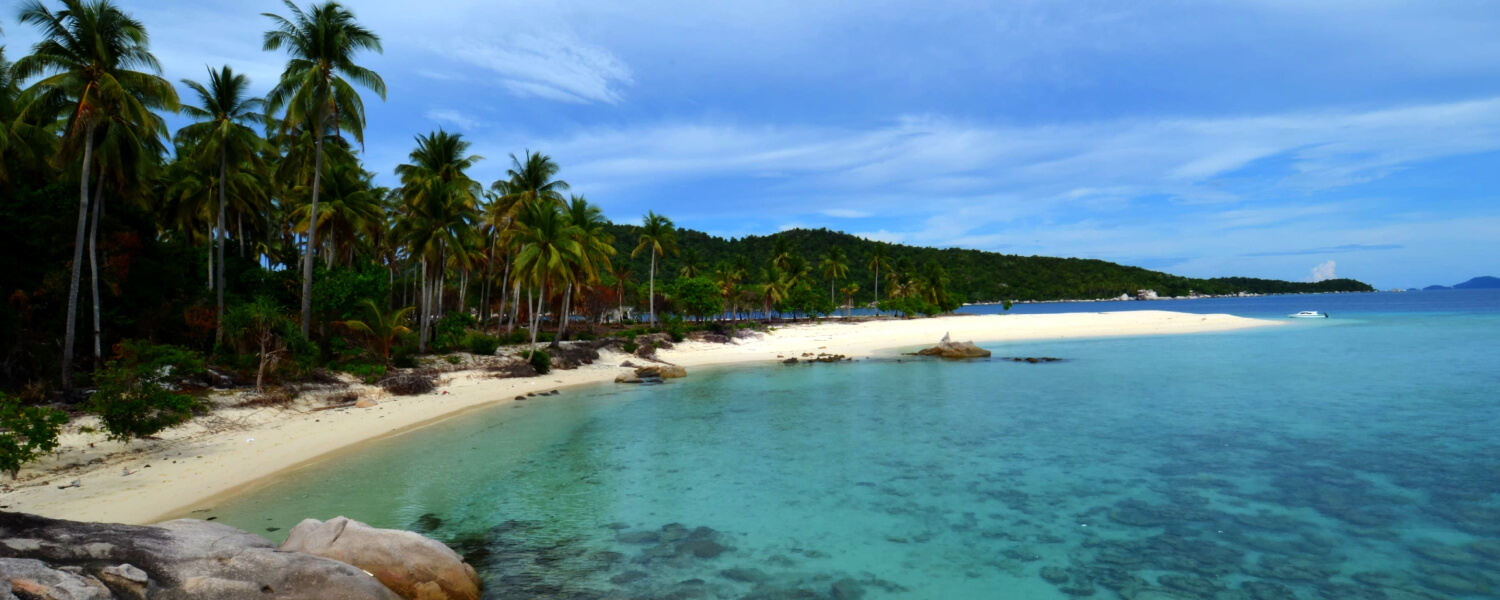DESTINATION
ANAMBAS ISLANDS

Season: Year Round
Diving, Snorkeling
The Anambas Islands are part of the Riau Archipelago of Indonesia. Located in the South China Sea between the Natuna Islands and Singapore, formed by lagoons which separate the island group. Most of the Anambas islands are inhabited and named to have more pristine shores and underwater life than other islands in the archipelago. Voted one of Asia’s top five tropical island locations to visit, the opportunities for diving and snorkelling are breathtaking. Even when standing from the shore line the receding sea waters unravel the other islands which are connected by sand dunes. Pulau Bawah Lagoon is known to be one of the best in the world, nominated in the same class as Bora Bora. Out of those 238 islands which make up the Anambas only 26 of them are inhabited with only some points accessible anchorages for yachts. Shallower areas prevent entry due to being surrounded by reefs and coral but a good reason to head underwater to explore it.
A main anchorage point is located at Anambas Resort, from there exploration can be done by tender, jet ski or kayak and allows a closer look at the natural environment. Main commodities only arrive every two months so it’s best to be well provisioned before arriving here.
Covering an area of almost 47,000 square kilometres, faced by wide open oceans. The islands provide panoramic views and unforgettable sunsets. Island hopping between some of the more popular islands and admiring the many lagoons is a way to take in the views. Penjalin Island beach is decorated with dozens of smaller islands and fine white sand which can be enjoyed by kayak, swimming or snorkelling and the calm secluded beaches of Tarempa located on Siantan Island makes you feel like you’ve landed on paradise. Find turtles hatching on Durai Island, explore the waterfalls of Temburun and Neara near Ulu Maras Village. While charming fishing villages and turtle hatcheries provide another experience of the rich natural ecosystem which thrives in these parts . Since the area is surrounded by water the local cuisine is heavily dependent on fish with local specialities showcasing it in many traditional dishes.
The seas of the archipelago are blue with rich coral formations and areas boasting hundreds of colourful fish. It’s a divers playground of coral walls, gorgonian and untouched coral carpet with incredible visibility including many fish species such as napoleon fish, batfish and bumphead. Suitable for all dive abilities Pulau Bawah has nearly no current and an average depth of 20 metres. The crystal clear waters are brimming with reef fish and the possibility of spotting manta ray and white sharks snooping around. For the adrenaline seeking diver there are a number of wrecks in the area. The Igara a 197.3 metre Italian Ore and Oil steamship sunk in 1973 has now become a destination and residence for three nurse sharks and schools of fusiliers, barracuda, snapper, batfish and angelfish. Caution should be taken here with very strong currents prone. Located in the north east of the abandoned oil rig of Udang, the two platform structure with long pillars stretches up to 100 metres. Each platforms expanse can be seen only ten minutes apart by boat.
Here you can see large schools of jacks, giant trevallies, batfish, barracuda, grouper, emperor angelfish, mackerel and snappers. The other of the wreck dives which should not be missed is the Swedish built Seven Skies, one of the worlds supertankers at 262 metre long.
Admiring the many lagoons, dive spots and cultural diversity is the main draw card to the area but dropping the toys, jet skis, kayaks, stand up paddle boards and exploring many of the other uninhabited islands and inlets will direct you to a nuance of peaceful bays and white sand beaches to set up and enjoy a picnic amongst a backdrop of coconut trees.





